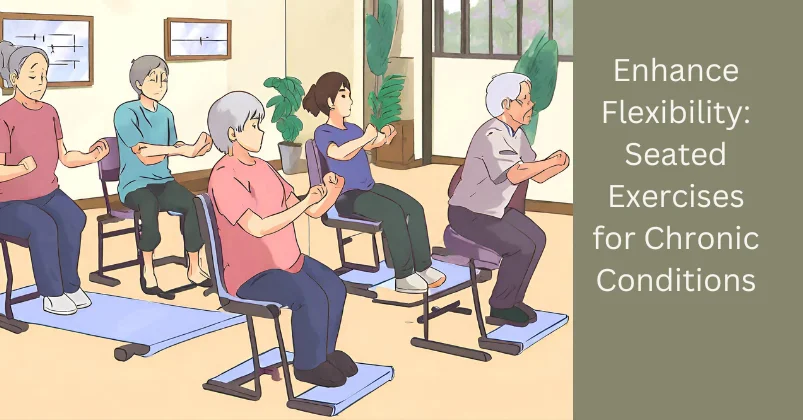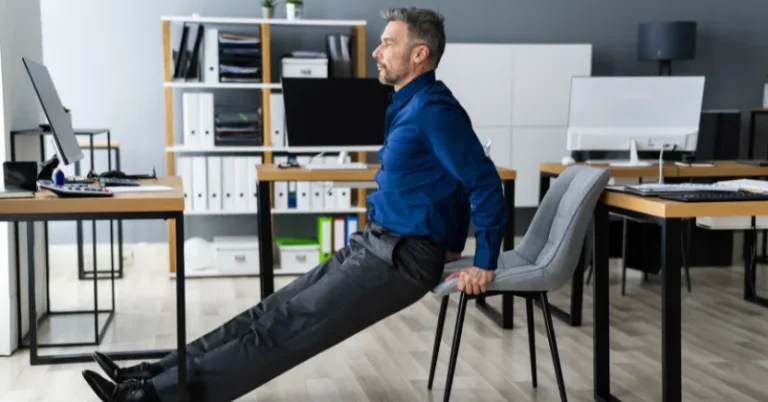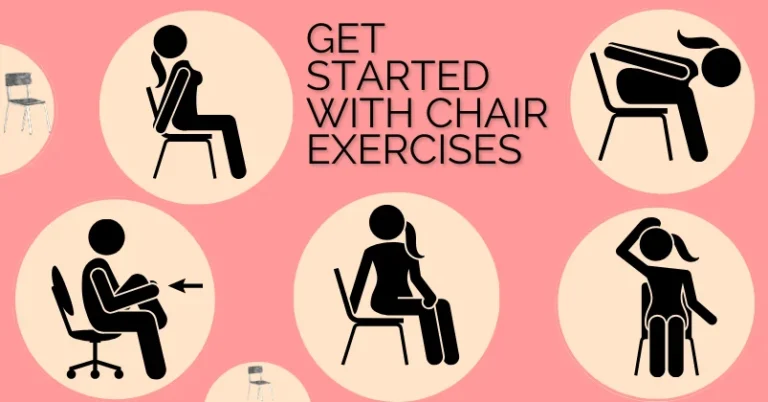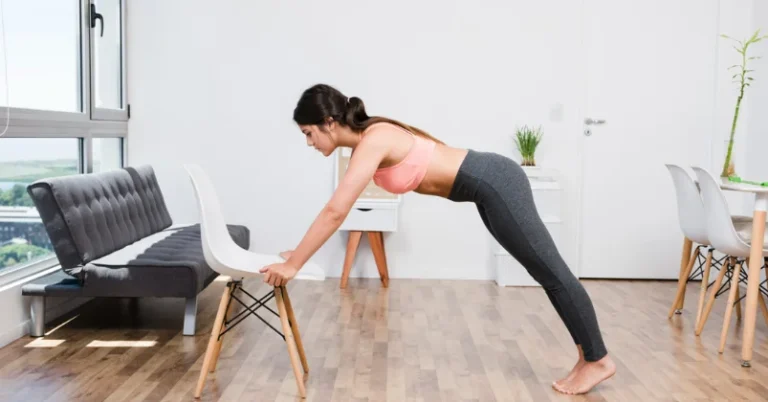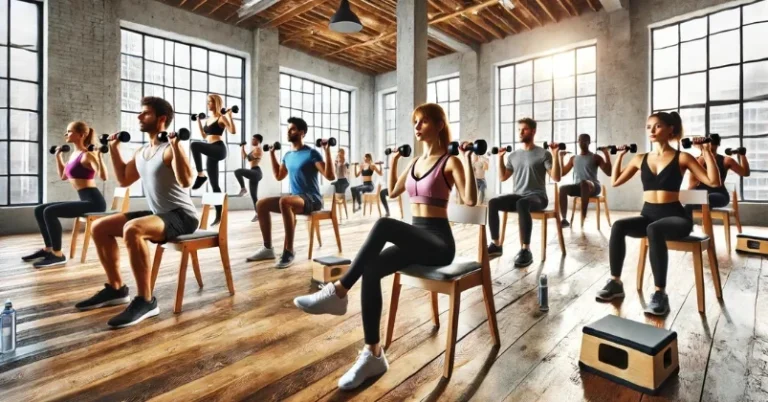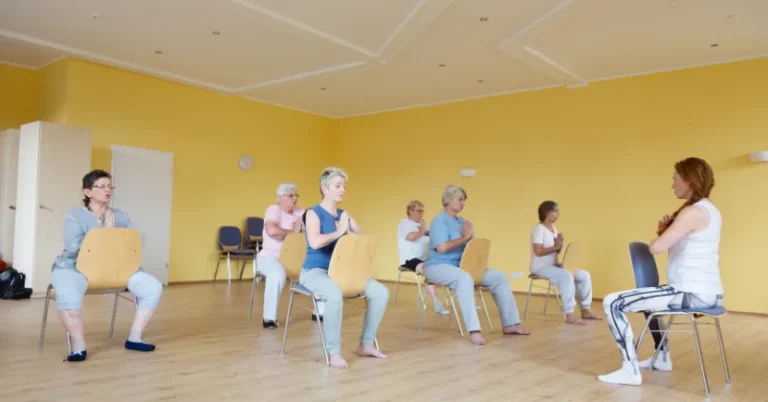Enhance Flexibility: Seated Exercises for Chronic Conditions
Hey there, fabulous ladies! If you've been feeling like your body is a little more stiff than a mannequin in a department store, you're not alone.
Many of us, especially those of us gracefully juggling chronic conditions like arthritis, heart disease, or diabetes, know the struggle of wanting to stretch but feeling limited.
Now, if you're thinking, “Standing exercises? You've got to be kidding me; I can barely stand waiting in line at the grocery store,” then you're in for a treat! Drumroll, please… 🥁 Say hello to seated exercises! No standing ovation required (pun intended).
These exercises are practically a magic carpet ride for your muscles. They boost your flexibility, make you stronger, and help you keep your balance—all while you sit pretty. And the cherry on top?
They're practically fall-proof! You can even customize them to fit your personal mobility needs. It's a win-win situation for all you gorgeous gals battling chronic conditions.
We'll explore why seated exercises are the ultimate addition to your self-care routine, and dish out some easy, fun examples you can do from the comfort of your home or even with a group of friends. So grab your favorite chair and let's get stretching, shall we?
Understanding Flexibility and Chronic Conditions
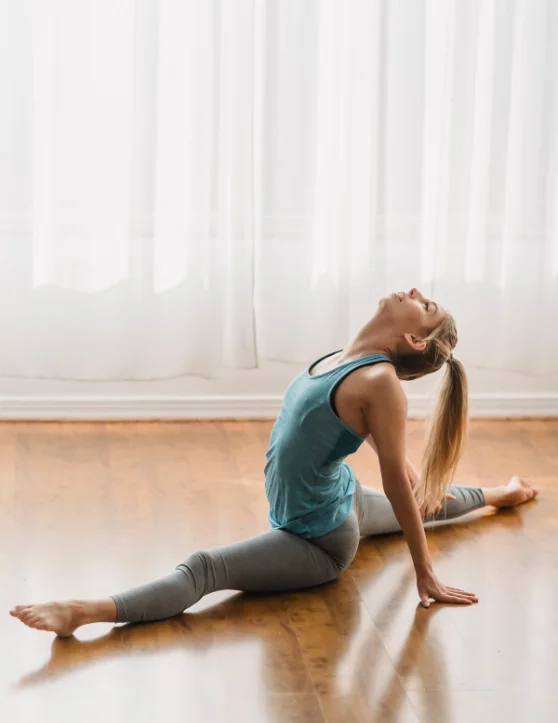
Ladies, let's talk flexibility! You know, that thing that makes you envy circus contortionists or your grandkids when they easily touch their toes?
Flexibility is basically how well your joints can sashay through their full range of motion. And, surprise, surprise—it's not just for gymnasts and yoga buffs.
It's crucial for everyone, especially for us queens dealing with chronic challenges like arthritis, osteoporosis, or even Parkinson's disease. There are so many challenges we are dealing with that go unseen.
Here at Smileyspoints we see you and we are here to help you feel your best no matter what the challenge is. Together we will not only survive but thrive.
Your Flexibility Journey: Why Being Bendy Matters, Especially with Chronic Conditions
Now, we get it. Chronic conditions can be the ultimate party poopers. They can make your joints as stiff as last week's bread and make simple daily tasks feel like you're competing in an obstacle course.
But guess what? A sedentary lifestyle is your condition's BFF—it only makes things worse.
Pro Tip: Before jumping—well, sitting—into any exercise regimen, it's super important to chat with your healthcare provider. They can help tailor a plan that's just right for you, and make sure it's safe and effective. No one-size-fits-all here!
So why not break up with your couch for a bit and spice things up with some seated exercises? These are no ordinary exercises; they're like the Swiss Army knife of fitness!
They don't just boost your flexibility; they can also ramp up your muscle strength, balance, and even your overall sense of well-being. It's like getting a full spa treatment, but in your living room and for your inner self!
Seated Exercise Benefits—Real Talk:
- Bye-Bye Stiff Joints: Improve your joint mobility and flexibility.
- Pain, Be Gone: Experience less stiffness and a break from annoying aches.
- Power Up: Strengthen your muscles and build that endurance.
- Steady As You Go: Enhance your balance and feel more stable on your feet when you do stand.
- Total Wellness: Feel healthier, more vibrant, and like the rockstar you truly are!
So, let's wave goodbye to stiffness and hello to a more flexible, fabulous you. Trust me, your body—and your chronic condition—will thank you. Ready to dive into some seated exercises? Let's Go!!
Importance of Seated Exercises
Ladies, let's be real. Not everyone is ready to hit the gym and pump iron like we're auditioning for a fitness infomercial. Especially when chronic conditions have RSVP'd uninvited to our lives. Enter the unsung hero of the exercise world: seated exercises!
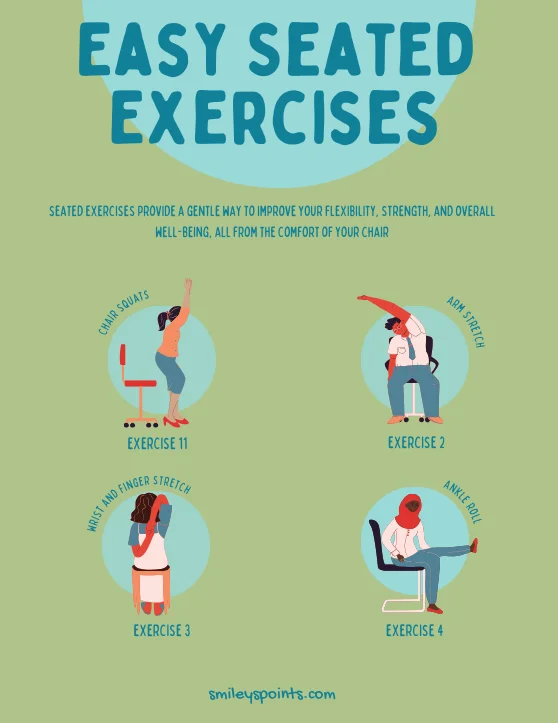
Sit Your Way to Wellness: Why Seated Exercises are now in fashion
Low Impact, High Reward
Why do we love seated exercises? Oh, let me count the ways. First off, they're low-impact, making them a perfect match for anyone who thinks ‘high-impact' should only refer to their favorite mascara. Seated exercises boost your flexibility, work on your balance, and extend your range of motion, turning you into a more graceful, agile version of yourself. Basically, think of it as yoga without all the hard-to-pronounce poses.
No Location? No Problem!
The best part? You can literally do them anywhere, making ‘I don't have time' as obsolete as flip phones. Whether you're at home binge-watching your favorite show, at the office sneaking in some exercise between emails, or on the road, these exercises are your new go-to for on-the-spot fitness.
Custom-Made For You
And get this, they're as customizable as your latte order. If your legs are giving you a hard time, focus on some fun upper-body moves like arm raises or sassy shoulder rolls. If it's your upper body that's playing the diva, go for lower-body gems like leg lifts or the ever-sophisticated ankle twirls.
Don't Trip, Get a Grip!
Let's not forget the anti-fall brigade. Falls can be scary, especially as we age or deal with chronic ailments. Seated exercises are like your personal stability squad, helping you improve balance and lessen the risk of taking a tumble.
So, Why Sit?
In a nutshell, seated exercises offer a smorgasbord of perks. From making you limber to lowering the risk of falls, they’re a versatile weapon in your wellness arsenal. So why not add a dash of seated sass to your daily routine?
Ready to discover some seated exercises that will have you flexing in no time? Keep scrolling, my flexible friend!
Muscles and Joints: The Key Components
The Dynamic Duo: Muscles & Joints 101
Okay, lovely ladies, it's time for a quick Flexibility 101. Picture this: your body is a well-coordinated dance troupe, and the star performers are your muscles and joints.
Together, they create the magic that lets you move, groove, and maybe even do a little cha-cha-cha around your living room.
Muscles: The Powerhouses
Let's dish about muscles first. They're like your personal stage crew, responsible for making sure you can take a bow, lift your grandkids, or reach for that top-shelf bottle of wine. 🍷
Regular stretching keeps these stars limber and in tip-top shape. And we're not just talking about your legs here. The entire cast—hamstrings, quadriceps, hip flexors, calves, chest, back, and shoulders—all need their moment in the stretching spotlight.
Joints: The Smooth Operators
Now, let's give a standing ovation (or a seated one, wink) to our joints. These little miracle workers connect your bones and let you move freely, sort of like the hinges on a treasure chest.
Just like muscles, they love a good stretch. So don't skimp on giving some TLC to your neck, shoulders, elbows, wrists, fingers, spine, hips, knees, and ankles.
Beyond Stretching: Say Hello to Strength
Surprise twist! Flexibility isn't just about stretching; it's also about strength. Picture this: stronger muscles are like backup dancers that make the star (that's you!) shine even brighter.
They help support your joints, making it less likely for you to suffer an oopsie-daisy moment. So let's hear it for resistance training!
Special Considerations for Chronic Conditions
Now, chronic conditions can sometimes be like that one party guest who just won't take a hint (we're looking at you, Joint Pain). The good news?
Our VIP seated exercises are the perfect workaround. They keep the spotlight on flexibility and strength without turning your joints into drama queens.
So there you have it, your guide to the dynamic duo that keeps you moving like the superstar you are! Strong muscles and happy joints make for one heck of a show.
Effective Seated Stretches
Let's Get Stretchy: Your Go-To Seated Stretches
Alright, my marvelous movers, grab your coziest chair and let’s get stretchy! Whether you’re a lifelong yogi or you haven’t touched your toes since the 8th-grade gym class, these seated stretches are about to become your new BFFs.
And guess what? They're super accessible, whether you’re dealing with arthritis, Parkinson’s, or just want to loosen up after a Netflix binge. I am a self proclaimed couch potato but it's time to get moving again.
The Neck Stretch: Say Goodbye to Tech Neck!
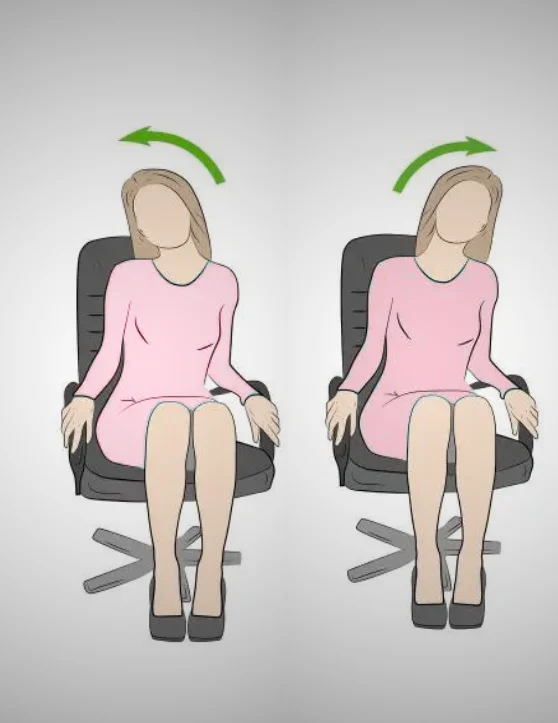
- The Setup: Sit like a queen—back straight, feet flat on the ground.
- The Stretch: Ever so gracefully, tilt your head to one side, aiming to bring your ear close to your shoulder. Imagine you're listening to some juicy gossip.
- Hold & Repeat: Hold that stretch for 10-15 seconds, like you're posing for your next fabulous Instagram selfie. Then give the other side the same royal treatment.
👑 Pro Tip: Feel like your neck has more knots than a sailor's rope? Gently roll your head in a circle to unleash that tension. Just think of it as giving your neck a mini-spa day!
The Chest Stretch: Unleash Your Inner Superwoman!
Now that our necks are feeling all kinds of fabulous, let's keep this stretching party rolling and show our chests some love.
Perfect for those days when you've been hunched over a keyboard, a knitting project, or a compelling romance novel.
The Chest Stretch: Feel That Heart Open Up!

- The Setup: Continue sitting on your throne (ahem, chair), with that back straight and feet like little twin pedestals—flat on the ground.
- The Stretch: Clasp your hands like you're sealing a pinky promise, but do it behind your back.
- Go, Go, Go: Gently lift those arms up and away from your back. Imagine you're opening up to give the world a big, loving hug.
- Hold & Release: Hold that heart-opening pose for 10-15 seconds, just long enough to feel like you're soaking in some sunshine through your chest. Then, gracefully let it go.
💖 Pro Tip: Keep those shoulders relaxed, like they're melting away from your ears. Think ‘elegant swan,' not ‘tense flamingo.'
This stretch is a one-way ticket to feeling open, spacious, and ready to take on anything.
Ankle Stretch
Alright, lovely ladies, let's shimmy our attention down to those oft-neglected stars of the show: our ankles. Whether you're rocking stilettos or slippers, these stretches will make sure your ankles are as spry as a 20-year-old cat on catnip. 🐱
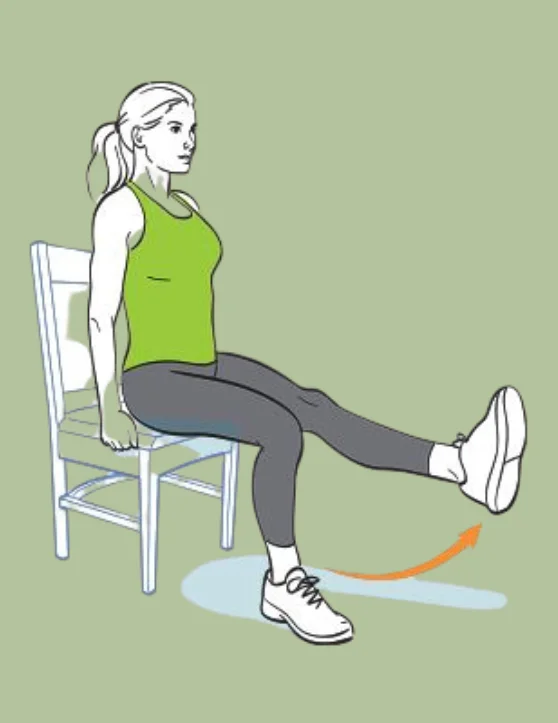
Ankle Groove: Get Those Tootsies Talking!
The Ankle Stretch: Let's Get Circular!
- The Setup: Keep that regal posture—we're still sitting up straight in our chairs, feet flat as if you're stepping on rose petals.
- The Stretch: Give one foot a lift, as if you're delicately testing the water in a pool. Now, rotate that ankle in a circle like it's doing the hula hoop.
- Switcharoo: Don't let the other ankle feel left out! Repeat the twirl on your other foot.
👣 Extra Sass: If you're feeling adventurous, point and flex those toes like they're doing their own little dance number. This will also give those calf muscles a nice stretch!
The Golden Rule: Your Body Knows Best!
Alright, stretch superstars, before we take our bows and revel in how fantastically flexible we're becoming, let's share a pearl of wisdom: always, and I mean ALWAYS, listen to your body. 🌟
Your Stretching Soundtrack: Deep Breaths
Consider your breaths the hit songs of this stretching playlist. Deep, soulful inhales and smooth, relaxing exhales are what we're aiming for here. Think of it as yoga for your lungs.
Don't Ignore the “Ouch!”
If something feels off—like you've hit the “yikes” button on your body's remote control—it's a sign to pause. Stretching should feel like a sigh of relief for your muscles, not a cry for help.
So if something doesn't feel quite right, halt those stretches and give your healthcare provider a call. Safety first, divas!
So, now you're now equipped with some stretching moves that are as comfortable as your favorite pair of PJs.
Whether you're conquering chronic conditions or just looking to feel a little more fabulous, these seated stretches are your go-to for keeping limber and feeling wonderful.
Shall we make this a regular rendezvous? The world (and your body) awaits your next move! 🌎💃
Strength Training from Your Throne: All Hail the Seated Workout! 🏋️♀️
Who says you need to stand up to amp up your strength? Not us! We’re all about inclusivity, and that extends to flexing those muscles—even while comfortably perched on your favorite chair.
Strength training isn't just for the gym rats; it’s for anyone looking to feel like an everyday superhero. And yes, that includes you, my friends navigating chronic conditions.
Bring On the Bicep Curls
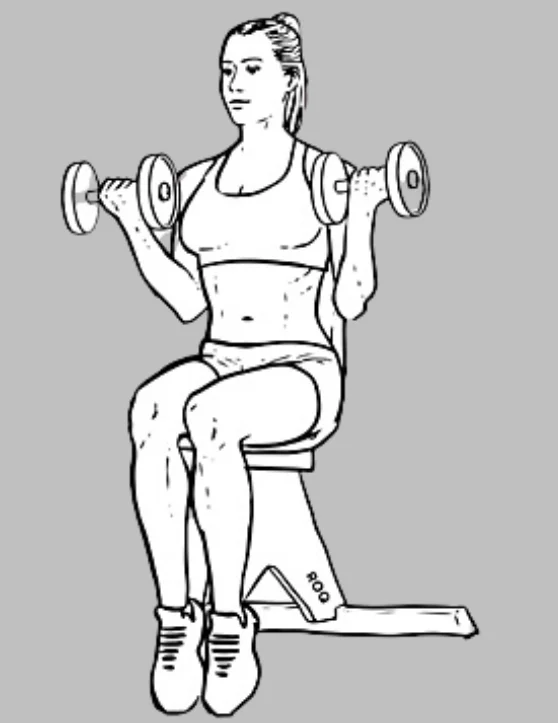
Ready to feel like the goddess of your living room? Grab some light dumbbells or resistance bands. Sit straight—channel your inner royalty—and plant those feet firmly on the floor.
Hold your dumbbells or bands and curl those arms up toward your shoulders, keeping elbows snug to your sides. Slowly lower them back to start.
Aim for 8-12 reps, and imagine you're lifting more than weights—maybe a crown? 👑
The Sky’s the Limit with Overhead Presses
Again, sit with poise and grandeur. Feet flat, back straight. Grasp your dumbbells or resistance bands and lift those arms to shoulder height. Now, reach for the sky!
Extend those arms upwards as if you're trying to high-five the ceiling. Bring them back down to shoulder level, and then to their starting position. A set of 8-12 should do the trick, and remember, you're aiming for the sky, not straining to touch it.
More Options, More Power
Not feeling the bicep curls or overhead presses? No worries, darling! There's a smorgasbord of seated strength exercises to choose from, targeting all areas of your upper body. From tricep extensions to seated rows, the possibilities are as vast as your imagination.
Your Comfort, Your Rules
Start off with lighter weights or resistance levels and take it from there. Gradually increasing the weight as you get stronger is the name of the game. And don't forget our golden rule: if anything feels uncomfortable, it's time for a timeout.
And voilà! You've just unleashed a world of strength without even standing up. Incorporate these into your routine, and you're not just flexing your muscles, you're flexing your capability and your confidence. Rock on, you seated strength sensation! 💪💕
The Art of Balance: Seated Edition 🤹♀️
So, you’ve tackled flexibility and strength while seated, and now you’re wondering, “What about balance? Isn’t that important too?” Absolutely, my friends!
Balance isn't just for tightrope walkers; it's for everyone who wants to feel more stable and confident in their daily activities.
This is especially true for those managing chronic conditions. Below are some seated balancing exercises designed to bring more equilibrium into your life:
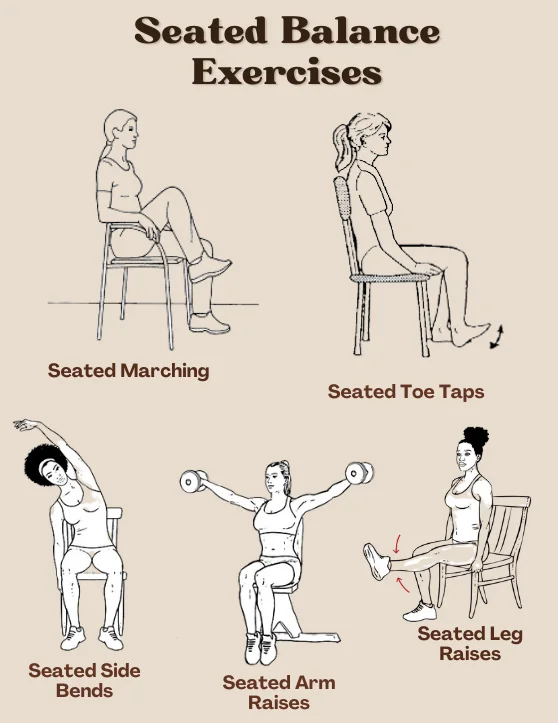
Seated Marching: A Parade in Your Chair 🥁
Sit down, feet flat, back straight. Now, lift one foot off the floor and hold it like you're marching in place. Hold it for a few moments and set it back down.
Alternate legs and repeat. This simple move does wonders for your balance and coordination.
Seated Leg Raises: Elevate Your Game 🚀
Take your seated position. Ready? Lift one leg off the ground and hold. Count a few seconds and then lower it back down.
Switch to the other leg and repeat. It’s like you're giving your legs their own elevator ride, but with a balancing twist!
Seated Toe Taps: Dance the Balance Away 🕺💃
While seated, lift one foot off the ground and gently tap your toes in front of you, then bring it back. Do the same with the other foot. Think of it as a seated dance move, perfect for testing your balance and enlivening those legs.
Seated Side Bends: Like a Weeping Willow 🌳
For this, sit tall and place your hands on your hips. Gently bend to one side as if you're a tree swaying in the wind. Hold it, feel it, then ease back to center.
Switch sides. This move is great for your core and balance.
Seated Arm Raises: Reach for the Stars ⭐
With your feet grounded and back upright, extend your arms out at shoulder level. Hold this “T-pose” for a few seconds and then bring your arms back down. It’s a simple but powerful gesture that works your arms and your balance at the same time.
Safety First!
Before starting any of these exercises, consult your healthcare provider, especially if you have a chronic condition. You want to make sure that these exercises align well with your unique health situation.
There you have it, a quintet of seated balancing exercises that will have you feeling as stable as a rock and as agile as a cat. Incorporate them into your daily routine to tap into that harmonious balance of life. 🎭
Enhancing Flexibility with Yoga and Tai Chi
Yoga and Tai Chi are more than just physical activities; they're holistic practices that work on your mind, body, and spirit.
Both can help you fine-tune your flexibility, balance, and strength. Plus, they come with the bonus of reducing stress and boosting mental wellness. What's not to love?
Yoga: A Symphony of Poses and Breaths
Yoga is like a symphony where each pose (or asana) and each breath contribute to the overall experience.
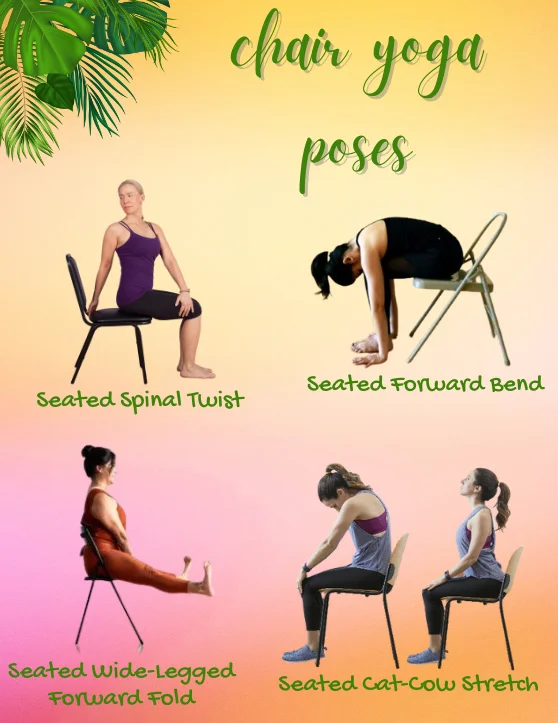
And you don't have to be an acrobat to do yoga; there are plenty of seated poses designed to enhance flexibility and well-being. Here's a breakdown of some seated poses you can try:
- Seated Forward Bend: Sit tall, legs stretched out. Inhale deeply, and as you exhale, fold your upper body over your legs. This stretch targets your lower back and hamstrings.
- Seated Spinal Twist: Sit up straight and cross one leg over the other. Use your opposite hand to gently twist your torso toward the crossed leg. This pose is great for spinal mobility.
- Seated Wide-Legged Forward Fold: Sit with your legs stretched wide apart. Inhale to elongate your spine, and exhale as you fold forward from your hips. This is excellent for inner thigh flexibility.
- Seated Cat-Cow Stretch: Sit at the edge of your chair with your feet flat on the ground. For the “Cat,” round your spine and drop your head toward your chest. For the “Cow,” arch your back and look up. This dual move helps to improve your upper body flexibility and relieve tension.
Tai Chi: The Art of Flow
Tai Chi, often described as “meditation in motion,” is a graceful exercise that involves a series of movements performed in a slow, focused manner.
While Tai Chi is traditionally practiced standing, many moves can be adapted for seated positions, perfect for individuals with limited mobility.
Here are some basic seated Tai Chi exercises:
- Wave Hands like Clouds: Sit straight and wave your hands gently from side to side in front of your body. This exercise helps improve arm flexibility and core strength.
- Pushing the Wave: Extend your arms in front of you, palms facing down, then retract them toward your body as if pushing a wave. This promotes flexibility in your arms and shoulders.
- Drawing the Bow: Imagine pulling a bowstring with one arm while extending the other arm like an arrow. This works on your arm and shoulder flexibility.
A Note on Safety 🚨
Before diving into these exercises, especially if you have a chronic condition, it's essential to consult your healthcare provider. Make sure these activities are suitable for your specific health needs.
So, whether you're sitting or standing, Yoga and Tai Chi offer a myriad of ways to improve flexibility, balance, and overall well-being. Give them a try and experience the holistic benefits they bring to your life! 🌱
Incorporating yoga and Tai Chi into your exercise routine can help to enhance flexibility, balance, and strength. These exercises are low-impact and can be done seated, making them ideal for those with chronic conditions.
Future Directions in Rehabilitation for Chronic Conditions
As medical knowledge and technology advance, rehabilitation programs are continually evolving to provide more effective and personalized care for individuals with chronic conditions. While current programs emphasize strength training, flexibility exercises, and education, emerging trends indicate a shift toward more holistic, patient-centered approaches.
Personalized Medicine
The field of genomics and personalized medicine is increasingly influencing rehabilitation programs. By understanding the individual genetic makeup of a patient, therapists can design exercise and treatment plans that are more effective and less likely to cause adverse effects.
Mind-Body Techniques
Integrative approaches that combine traditional rehabilitation exercises with mind-body techniques like mindfulness and meditation are gaining traction. These methods can offer a more rounded approach to not just physical well-being but also mental and emotional health.
Multidisciplinary Teams
Traditionally, physical therapists were the primary professionals involved in rehabilitation. However, a more collaborative approach involving dietitians, psychologists, occupational therapists, and even social workers is becoming common.
This team-based approach ensures that all aspects of a patient's condition are addressed.
Remote Monitoring
The advent of wearable technology and smart devices has allowed for remote monitoring of patients, enabling real-time adjustments to treatment plans. This technology can be particularly beneficial for patients who live in remote areas or have mobility issues.
AI and Data Analytics
Big data and artificial intelligence (AI) are set to revolutionize rehabilitation. By analyzing large sets of patient data, AI can help healthcare providers predict outcomes, personalize treatment plans, and even identify previously unknown treatment options.
The Evolving Landscape of Rehabilitation
Rehabilitation for chronic conditions is an ever-evolving field that is incorporating advancements in medical science, technology, and healthcare delivery systems.
The focus is shifting from merely treating symptoms to offering a more holistic, patient-centered approach that aims for the overall well-being of the individual.
As always, consult your healthcare provider before undertaking any new rehabilitation or exercise program, especially if you have a chronic condition.
Preventing Injuries and Pain Management
Chronic conditions can be total party crashers, but you don't have to let them ruin your exercise vibe. Here are some sassy but oh-so-practical tips to make sure your exercise sessions are as fabulous as you are, minus the “ow!”
Start Slowly
Ease into It, Darling!
We've all been there—going from couch potato to fitness diva overnight sounds tempting, but hold your horses! Start with exercises that feel comfortable and gently raise the stakes as you go. Trust us, your joints will thank you.
Listen to Your Body
Be Your Own Body Whisperer
Learn to read your body's signals like your favorite romance novel. If it's whispering “this hurts,” it's time for a self-care chapter. There's no heroism in pushing through pain, ladies.
Use Proper Form
Strut Your Stuff with Style
You wouldn't wear ill-fitting heels to a cocktail party, so why use sloppy form when you're exercising?
If you're unsure about how to strike the perfect pose—er, form—consider consulting a fitness coach or physical therapist. They can make you the belle of the exercise ball!
Incorporate Stretching
Get Stretchy With It
Think of stretching as your exercise routine's best accessory. It not only keeps you limber but also reduces the risk of those pesky injuries. So go ahead, add some Tai Chi or upper-body stretches to your repertoire and make it a head-to-toe fabulous affair!
Manage Pain
Be the Queen of Pain Management
If discomfort shows up uninvited, take control! Heat therapy, ice packs, and perhaps a nice massage are great ways to reclaim your throne. Over-the-counter remedies can also be your knights in shining armor—just keep it sensible and consult your doc.
Seek Medical Attention
Call in the Pros
Persistent or severe pain should be dealt with like a fashion faux pas: promptly and professionally! Don't hesitate to consult your healthcare provider to get the best tips tailored for you.
By incorporating these tried-and-true tips, you'll be ready to flaunt your exercise routine like the goddess you are—minus the “ouch!”
The Mental Benefits of Physical Exercise
While the physical advantages of exercise are well-documented, the mental benefits are equally important but often overlooked.
Regular physical activity, including seated exercises, can have profound effects on mental health and cognitive function.
Stress and Anxiety Relief 😌
Exercise releases endorphins, which are natural mood lifters. They can help ease stress and anxiety, providing a sense of calm and well-being.
Even low-impact exercises like seated stretches or Tai Chi can induce a relaxation response, counteracting the harmful effects of stress.
Enhanced Focus and Cognitive Function 🎯
Physical activity improves blood flow to the brain, which may help sharpen your focus and cognitive functions.
Whether you're doing seated exercises or something more intense, regular physical activity can improve various cognitive functions, including memory, attention, and problem-solving skills.
Emotional Resilience and Mood Improvement 🌈
Exercise can act as a natural antidepressant by releasing dopamine, serotonin, and norepinephrine.
These neurotransmitters play an essential role in regulating mood and emotions. For those dealing with depression or mood swings, even simple seated exercises can be a stepping stone toward emotional balance.
Better Sleep 🌙
A consistent exercise routine can improve sleep quality by helping you fall asleep faster and deepening your sleep. Just be cautious not to exercise too close to bedtime, as it can energize you and make it difficult to fall asleep.
Social Connection and Self-Esteem
Engaging in group exercises, whether it's a seated yoga class or a Tai Chi group, can provide a sense of community and belonging. It's an excellent opportunity for social interaction, which can improve mental well-being and self-esteem.
Safety First: Consult Your Doctor 🩺
Before embarking on any new exercise regimen, especially if you have chronic conditions or other medical issues, consult your healthcare provider for personalized advice.
Guidance from Healthcare Providers
Why Your Doctor Should Be Your Exercise BFF
Hey there, radiant ladies! We know the idea of exercise when you're juggling chronic conditions can feel like trying to wear stilettos on a hiking trail—uncomfortable and a tad risky. But don't worry, that's where your healthcare squad comes in.
Let's Get Personal
First off, have a chit-chat with your doc. Think of them as your personal trainer in a white coat. They'll help you sift through the do's and don'ts of seated exercises, tailored just for you.
The Health Department's Two Cents
Even the Department of Health and Human Services is in on the act, suggesting that fabulous women like you, with or without chronic conditions, need a dash of regular physical activity in our daily cocktail of life.
But remember, this isn't a one-size-fits-all affair. Your doc will help you figure out what kind of ‘cocktail' works best for you.
Physio or Personal Trainer? Why Not Both!
Your healthcare provider can hook you up with a physical therapist or another pro to jazz up your exercise routine. Consider them your glam squad for health, keeping tabs on your progress and switching things up when needed.
Your Doc's All-Around Care Package
And here's the cherry on top: your healthcare provider can also guide you in mastering the art of living well with a chronic condition—from what to munch on for dinner to how to juggle medications like a pro.
Consider them your go-to for the 411 on a complete, holistic wellness plan.
So, before you dive into your next seated exercise session, make sure you've got the green light from your healthcare provider. They're your co-pilot on this journey to a flexible, fabulous you!
Wrapping It Up: The Fabulous You Awaits!
Ladies, we’ve spilled the tea, laughed a little, and hopefully learned a lot. Now let's have a heart-to-heart.
Embracing seated exercises is like slipping into a pair of comfy, yet stylish, flats—they provide support, look good, and are oh-so-practical for our busy, fabulous lives.
Unpack the Benefits
From boosting that bendy flexibility to making you feel like a spry twenty-something again (endurance? Yes, please!), seated exercises are the LBD (Little Black Dress) of fitness for us chronic condition warriors.
They make us look good, feel good, and most importantly, do good for our bodies.
Science-Backed Sassiness
Okay, I promise this is the last time I'll sound like a know-it-all, but studies say—yes, actual studies—that seated exercises are your best friend if you're easing back into active life. They're safe, effective, and can make a world of difference.
Variety is the Spice of Life
Think of seated exercises as one fabulous item in your wellness wardrobe. Sure, they're versatile and reliable, but sometimes you need to throw in a statement piece. So, don't be shy—mix and match your fitness routine with different types of exercises to keep things spiced up!
The Glorious Takeaway
In a nutshell, when you invite seated exercises into your daily life, you're RSVP-ing to a healthier, happier you. You'll gain flexibility (yoga pants, here we come!), reclaim independence, and bolster that ever-so-important endurance.
So, what are you waiting for? Put on your metaphorical sneakers and let’s get this fabulous fitness journey started, one seat at a time!
FAQs
Seated exercises are great for individuals with limited mobility. Some exercises that can be done while sitting include arm circles, leg lifts, seated twists, and shoulder rolls. These exercises can help improve flexibility and range of motion.
Seated exercises can be beneficial for those with chronic conditions such as arthritis, multiple sclerosis, and Parkinson's disease. They can help improve flexibility, strength, and balance. Seated exercises can also be a great way to stay active and maintain independence.
Individuals with disabilities may need adaptations to exercises to make them more accessible. Some adaptations that can be made include using resistance bands or weights, using a chair with arms for stability, and modifying the range of motion. It's important to consult with a healthcare professional or physical therapist to determine the best adaptations for each individual.
Effective stretches for increasing flexibility while sitting include hamstring stretches, calf stretches, and hip stretches. These stretches can help improve flexibility and range of motion in the lower body. It's important to hold each stretch for at least 15-30 seconds and to avoid bouncing.
Recommended exercises for seniors with limited mobility include seated leg lifts, chair squats, seated twists, and arm circles. These exercises can help improve flexibility, strength, and balance. It's important to start slowly and gradually increase intensity as tolerated.
Exercise can improve flexibility for individuals with chronic disease by increasing blood flow and oxygen to the muscles, improving range of motion, and reducing joint stiffness. Regular exercise can also help prevent muscle atrophy and improve balance and coordination. It's important to consult with a healthcare professional before starting any exercise program.

